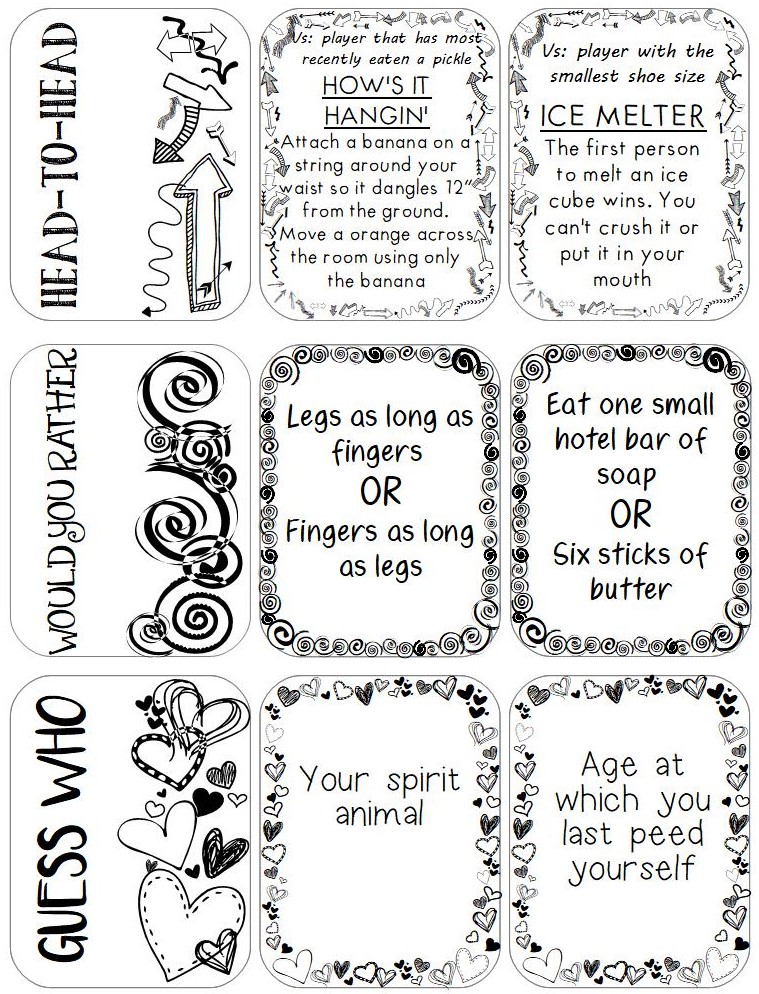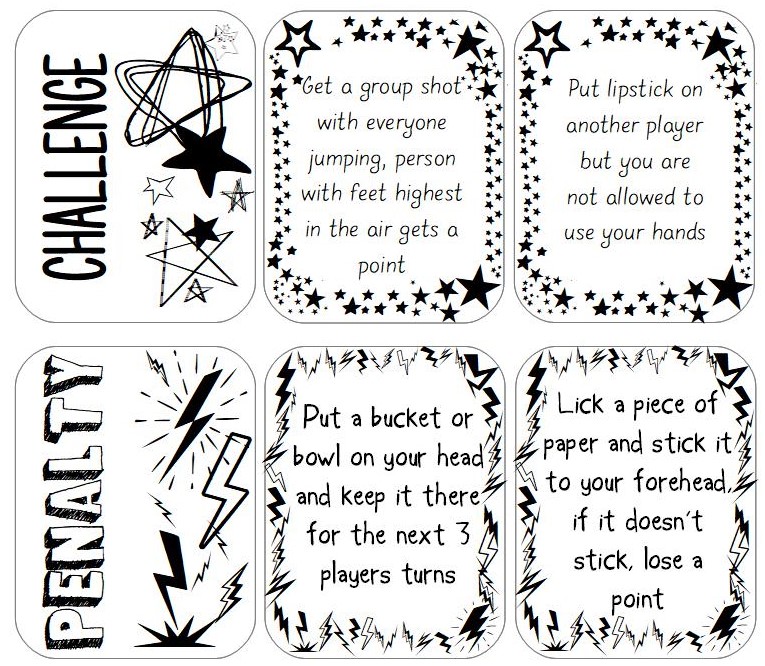I realize this is a strange time to post an idea for a party game, as there should certainly be NO PARTIES in the forseeable future. However, there is continued interest in the game I created and I have had multiple inquiries from people interested in making their own versions. So I figured I would finally get around to posting about my updated version of the game and make available pdf downloads for those who are interested in creating their own version. I also feel like some aspects of this game may lend itself well to a virtual zoom-party type game, so perhaps someone with more time on their hands than I currently have will take some of my ideas and run with it!
If you are one of the few who has been following this blog for awhile, you may recall the fantastic DIY Bachlorette Party Game I created for my best friend's wedding. Since then, there has been high demand in our group of friends to come up with excuses to play. This is by no means a casual game, it is something that you should curate a hilarious group of people to participate and can most certainly make a party on its own. We have now had the oppurtunity several times to play the original game with new groups of people, and while it has always been super fun and a huge success, it has allowed me to think of some key details to change to improve on and make myself my own (second edition) version!
As a first step, I decided to redesign the card deck. I came up with some digital designs for 2 sided cards, making the cards a bit smaller this time around. There are a lot of ways to accomplish designs like this, with a huge scale of technical skill required. A very basic way to do something like this (the technique I used to create the designs for the origial game deck) is to hand draw designs, scan, and then import into the program of your choice to rescale/manipulate to fit your needs. This time around, I simply used the open office drawing program to make designs using free symbols and images available. Gimp is also a great program (very similar to photoshop, but free) for simple digital designs/text art.
There is a mixed game deck with 4 categories: Head-To-Head, Would You Rather, Guess Who, and Challenge. There is a separate deck of Penalty cards. For this version, I opted to get rid of the penalty wheel and instead increased the number of cards in the penalty deck and I decreased the number of cards in the game deck, keeping the best of each category, as we never got close to going through them all in a game. I printed the cards double sided on colored cardstock (I used the printer at work so unfortuntely some of the cards are a little out of line). After using a paper cutter to cut out all the cards, I rounded the corners with a paper punch and then laminated them and did a final trim of all the cards.
I altered the rules only slightly in this new version, mostly adjusting scoring in order to help game play move along a little quicker.
As players gain and loose points, they move their pieces around the scoreboard. To create this scoreboard, I made a tri-folding board out of scraps of chipboard (cardboard would have worked fine too). I decided to cut the chipboard to a size that allowed me to utilize an empty shoe box as a game box. I made hinges for the trifolding board using folded piece of thin chipboard and duct tape. I then wrapped the board with a burlap patterened wrapping paper, making sure to carefully fold the board as I pasted the paper down, ensuring that the board would continue to fold well without ripping the paper.
Each score on the scoreboard has a corresponding rule. The rule must be followed at all times while a player holds that score. Again making an alteration to the original game, I cut the scoreboard down to 20. I printed out my scoreboard scores and rules on cardstock. I mounted the rules on the board boardered by patterened paper and used the cardstock numbers as stencils to cut the scores out of cork. In retrospect, I should have planned better and either printed the rules in smaller text or used a larger board, since it is a bit more crowded than I would like.
If it any point a player does not follow their rule, they must draw a card from the penalty deck. These cards range from simply losing a point, to gaining points but needing to follow multiple scorboard rules, to sometimes silly/embarassing (though none too mortifying) penalties such as hula-hooping with an invisible hoop.
I did a test run of this version of the game with a few friends. It does in fact work just fine with 3 people playing, though the pace of the game (and the entertainment factor) definitly benefits from a larger number of players. This game is great for a group anywhere from 4 to about 12 players (so maybe not the best entertainment in this COVID era). Obviously, the more players in the game, the longer the game may run, but higher scores can be attained so players move faster around the board. It's a super fun game to pull out towards the end of a party (often with varied levels of sobriety). One benefit is that players are involved in the game regardless of whose turn it is. The only limitation to the number of players is the number of game pieces, but anything can be used for these. I have a fun collection of plastic animals/monster finger puppets that we've used, but anything small enough to have multiple players on a score will work just fine.
If you would like to try out making a game for yourself, I now have pdf files with the cards, scoreboard and rules available to purchase and download.









